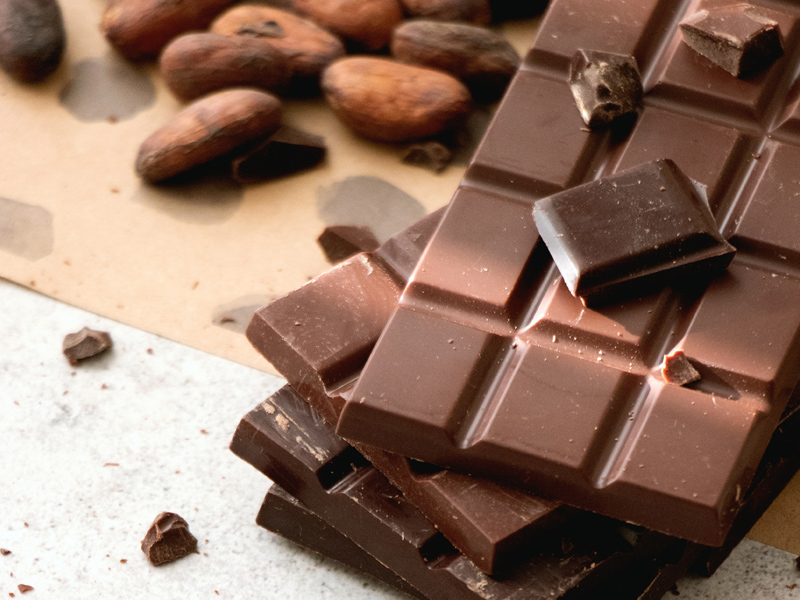by Chef Tom Hunt
Food brings people together and creates and strengthens communities first around the table, but also whole communities of farmers and producers around the globe.
Buying Fairtrade-certified ingredients sends a clear message to the food system that you care about the people who made your food and ensures that a fair proportion of your money is filtered down to the farmer.
Buy a bar of Fairtrade chocolate – or make the specially designed truffles (recipe below) and dive into the experiment!
Chocolate Biodiversity Experiment
The biodiversity and growing conditions or terroir of a plant and product affect its flavour, nutrition, aroma and even its appearance. Chocolate is a perfect example of how biodiversity is expressed in taste.
The Theobroma cacao tree grows in the rich soils of the tropical rainforests, in a global belt 20 degrees north and south of the Equator. While much of the flavour of cacao is attributable to the genetics of the plant, the fermentation and drying of the cacao beans, post-harvest, along with each region’s soil composition, climate, altitude and other factors, contribute to regional differences in flavour.
Follow these steps to taste the biodiversity in your chocolate.
1. Think
Before and during the tasting, think about the country, region and even the farm where the chocolate has come from. Try looking up images of the location to help you visualise it. Research and consider the growing conditions, altitude, type of soil and, importantly, the cacao species.
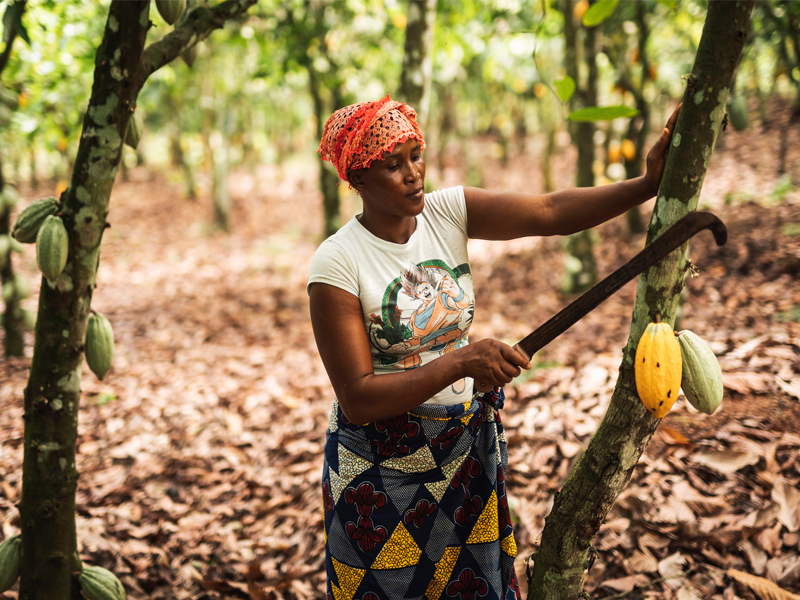
Doh Oho tends to cocoa pods in her farm in Côte d’Ivoire 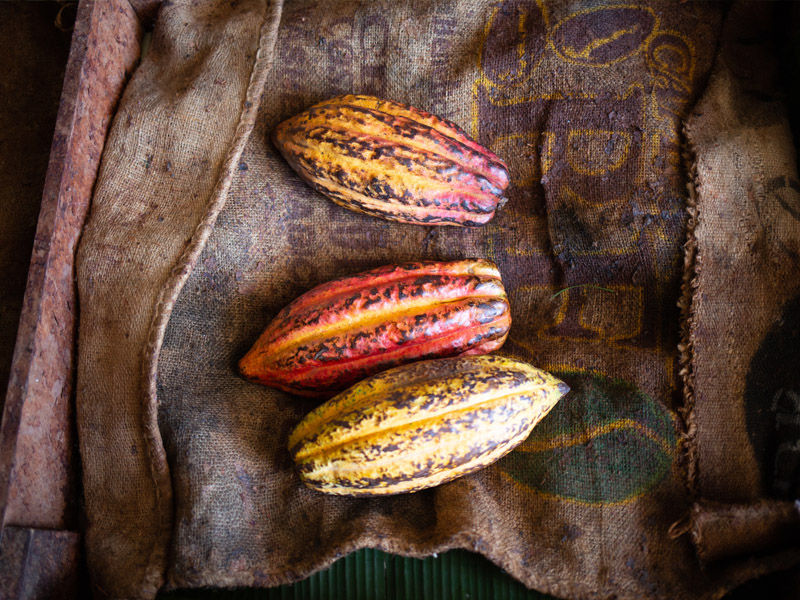
Different coloured cocoa pods await processing at the Xol factory in Honduras 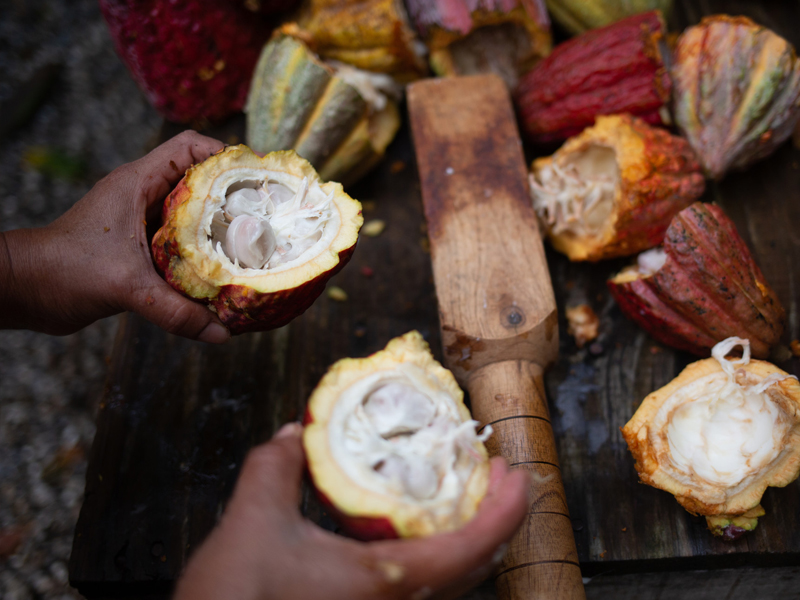
Cocoa pods are broken to remove the pulp and beans, Xol farm, Honduras 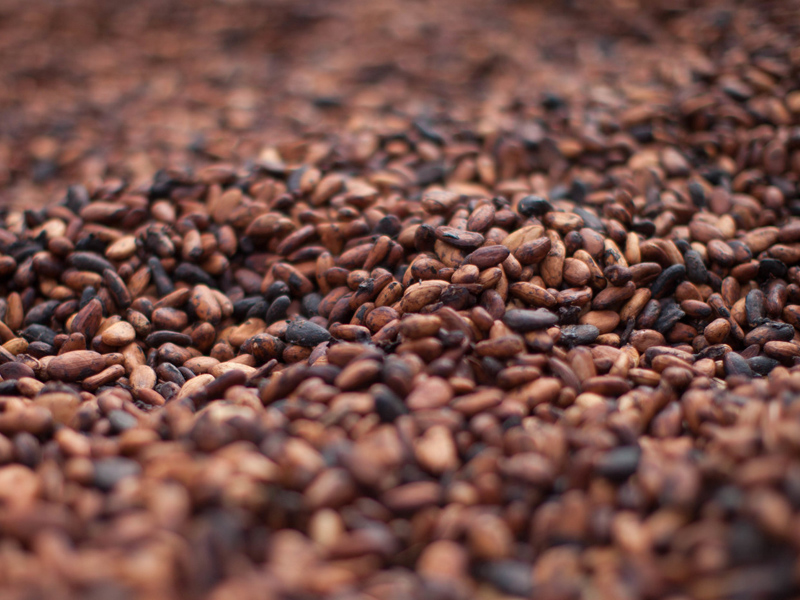
Cocoa beans drying in Côte d’Ivoire
2. Look
Study the chocolate’s appearance, what hints of colour can you see? How light or dark is the chocolate, can you see hues of red, orange or purple?
3. Feel
Close your eyes, pinch your nose and pop the chocolate on the front of your tongue, as this will cut off your sense of taste. How does the chocolate feel in your mouth? Is it creamy, smooth or textural? Is it fatty and unctuous?
4. Taste
Release your nose, keeping the chocolate on the front of your tongue, and allow the chocolate to melt and fill your mouth with flavour, then chew and swallow. Consider the longevity and complexity of the flavour. Is it sweet or bitter? Does it have a high or low acidity? Is it astringent and sour or fruity and caramelised? Are there any other flavours it reminds you of?
Chocolate Truffle recipe
As a meditative eating experiment, I’ve designed this chocolate truffle recipe made from a simple water ganache, which brings out the natural and intense flavours of the chocolate, to taste the biodiversity and terroir of a Single Origin chocolate. Take your pleasure seriously, taste slowly and contemplate the origin of the chocolate’s nuanced flavours. Immerse yourself in the experience, imagine the jungle and nature that surrounds you.
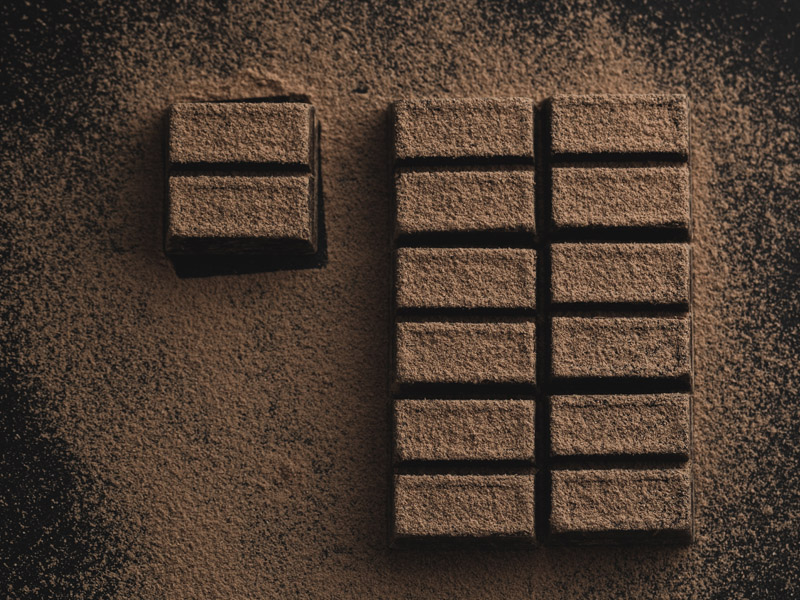
Makes about 16 small truffles
Ingredients
150g Fairtrade Single Origin chocolate, such as:
- Try Divine’s deliciously rich milk chocolate sourced from Kuapa Kokoo co-operative in Ghana
- Try Seed & Bean’s single origin dark chocolate from Ecuador
- Try Chocolate & Love’s single origin dark chocolate from Panama
Cocoa powder, to dust
Method
Line a small tray or plate with unbleached parchment paper. Finely chop the chocolate into pieces. Pour 80ml water into a small saucepan and bring to a slow simmer, then remove from the heat. Add the chocolate pieces to the pan and set aside for 1 minute. Single Origin chocolate can be more sensitive to heat and movement than cooking chocolate, so be careful to not overwork it. Gently stir once or twice until the chocolate has melted, then pour onto the lined tray or plate. Sprinkle lightly with sea salt and then refrigerate for 1 hour, or until set. Turn out onto a chopping board, cut into rectangular pieces and dust with cocoa powder to finish.
More recipes
Banner photo of chocolate by Tetiana Bykovets on Unsplash
Photo of cocoa dusted truffles by Mae Mu on Unsplash
